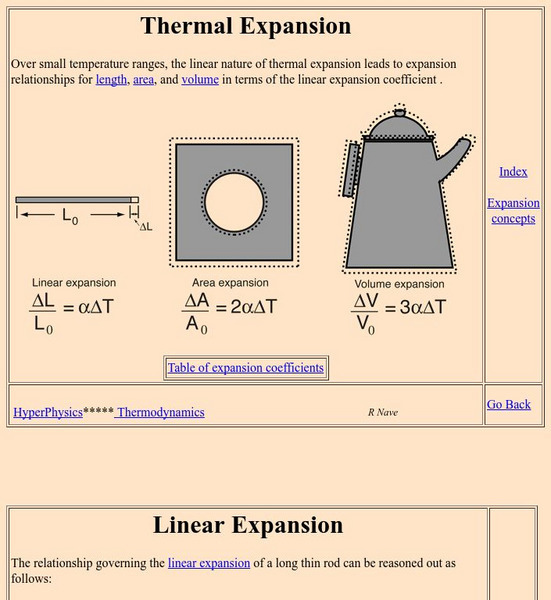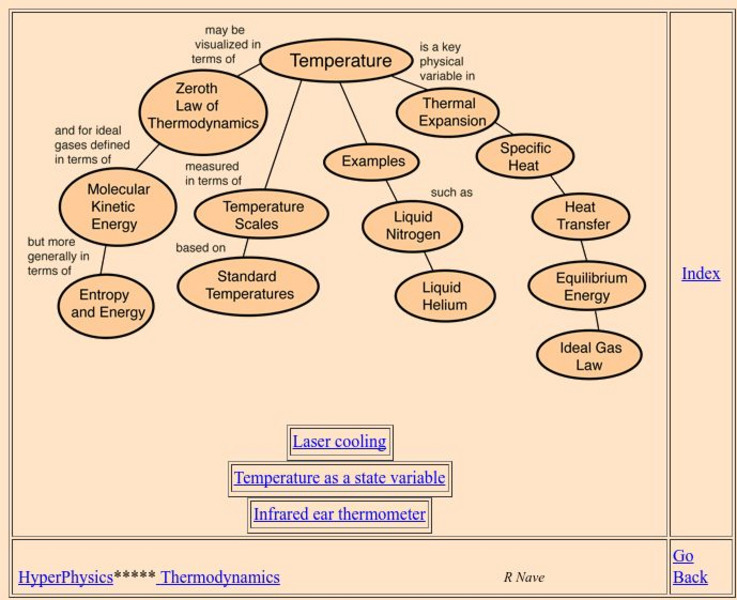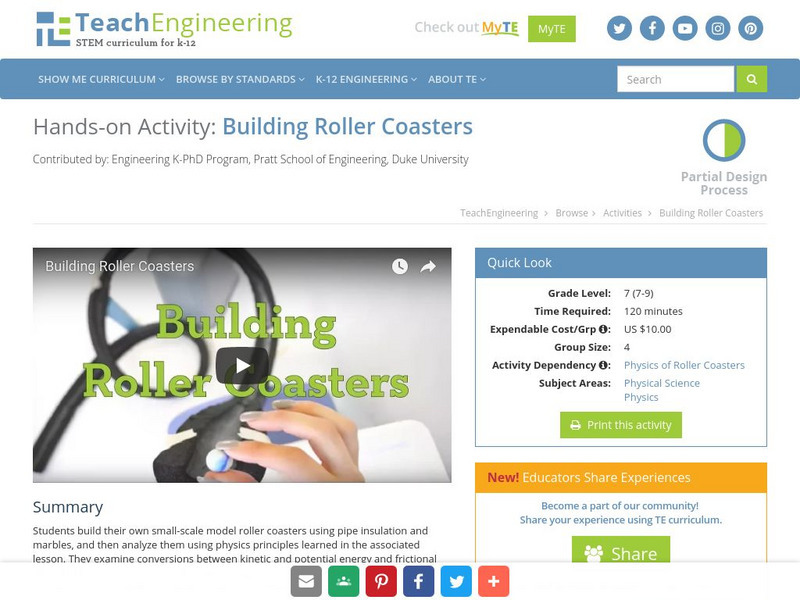Hi, what do you want to do?
Exploratorium
Exploratorium: That's the Way the Ball Bounces
This site explains the factors that determine whether and how much a ball bounces and includes activities to test "bounciness" for yourself!
American Chemical Society
Middle School Chemistry: Heating and Cooling a Liquid
This simulation allows students to make observations about how particle motion changes as the overall temperature of a liquid changes.
CK-12 Foundation
Ck 12: Temperature
[Free Registration/Login may be required to access all resource tools.] In this interactive tutorial students will learn the physics definition of temperature, how temperature is measured and how to convert the units of temperature...
Science Education Resource Center at Carleton College
Serc: Hydrogen Oxygen Rockets
Students investigate how to build and launch a simple rocket that uses hydrogen and oxygen gases that will be mixed to propel the rocket. Students learn the principles of combustion reactions, kinetics, stoichiometry of reactions,...
The Environmental Literacy Council
Environmental Literacy Council: Temperature
The difference between heat and temperature is explained, followed by a discussion of temperature and its relation to global climate change. Gallileo Galilee, Daniel Gabriel Fahrenheit, Anders Celsius, and Carl Linnaeus are mentioned in...
Texas Education Agency
Texas Gateway: Rotational Motion and Angular Momentum: Summary
This page provides a summary of each section in Chapter 10: Rotational Motion and Angular Momentum from the AP Physics online text.
ClassFlow
Class Flow: Chemical Kinetics and Alkane Nomenclature
[Free Registration/Login Required] This flipchart covers essential concepts of factors that affect a chemical reaction and nomenclature of Alkenes.
Ducksters
Ducksters: Practice Science Questions
A link to quizzes over a wide range of science topics. Students can test their knowledge on topics from the cell to kinetic energy.
Georgia State University
Georgia State University: Hyper Physics: Temperature
A page describing the concept of temperature and temperature scales. An interactive JavaScript form allows the visitor to investigate the relationship between the Kelvin, Celsius and Fahrenheit scales; enter a value and allow the...
Georgia State University
Georgia State University: Hyper Physics: Thermal Expansion
Defines thermal expansion and elaborates on the concept of linear expansion. Provides the equation for linear expansion and includes an interactive JavaScript form which allows the visitor to investigate the relationship between...
Georgia State University
Georgia State University: Hyper Physics: Expansion Concepts
An indexing page from Georgia State University Physics Department which includes links to various other pages with information pertaining to thermal expansion. From expansion coefficients to equations to calculation and practice pages,...
Georgia State University
Georgia State University: Hyper Physics: Area Expansion
The concept of area expansion is presented and explained. An equation for calculating the amount of area expansion is provided.
Georgia State University
Georgia State University: Hyper Physics: Bimetallic Strips
The operation of bimetallic strips is explained and illustrated. The principle of thermal expansion is related to their operation. A link to applications of bimetallic strips is provided.
Georgia State University
Georgia State University: Hyper Physics: Temperature Concepts
An indexing page which includes links to a wealth of pages detailing the conceptual meaning of temperature. A hypertext format allows the visitor to quickly gain access the desired information.
University of Colorado
University of Colorado: Ph Et Interactive Simulations: Reaction & Rate Simulation
Students will learn what causes reactions and what affects the rates of reaction through data collected by conducting several simulated experiments.
Annenberg Foundation
Annenberg Learner: The Chemistry of Running
A simulation where students explore the chemistry and physiology of exercise. Students will choose an avatar and try to set a running goal by applying their knowledge of chemistry. Students will also calculate to see how many...
City College of New York
City Technology: Wind Up Toy
A series of three video tutorials with accompanying written instructions demonstrating how to make a wind-up toy.
University of St. Andrews (UK)
University of St. Andrews: Ludwig Boltzmann (1844 1906)
A very in-depth biography of this wonderful individual who had numerous successes, Maxwell-Boltzmann Distribution Curves included.
Museum of Science
The Atom's Family: Radiometer
Help Dracula find out about light waves by using a virtual radiometer.
Other
Wikibooks: Physics Study Guide
A handy resource that gives an overview of equations and definitions pertinent to an introductory, college-level physics course, with two of its three sections focusing on motion-related topics and principles.
Museum of Science
Museum of Science and Industry Chicago: Online Science: Drop Eggs Into Cups
Step-by-step illustrated instructions showing how to drop four eggs into four cups without touching them. Demonstrates the concept of inertia according to Newton's first law of motion.
TeachEngineering
Teach Engineering: Building Roller Coasters
In this hands-on activity students learn about the laws of physics by creating a marble roller coaster.
TeachEngineering
Teach Engineering: Motion Commotion
Students learn why and how motion occurs and what governs changes in motion, as described by Newton's three laws of motion. They gain hands-on experience with the concepts of forces, changes in motion, and action and reaction. In an...
Annenberg Foundation
Annenberg Learner: Amusement Park Physics: Roller Coaster
This interesting and interactive exhibit demonstrates how Newton's Laws of Motion impact the design and safety of roller coasters.
Other popular searches
- Potential and Kinetic Energy
- Potential Kinetic Energy
- Potential & Kinetic Energy
- Kinetic Energy Questions
- Thermal and Kinetic Energy
- Kinetic Energy Lesson Plans
- Kinetic Energy of Particles
- Kinetic Energy Problems
- Science Kinetic Energy
- Potentail and Kinetic Energy
- Kinetic Energy Experiment
- Pot Entail and Kinetic Energy

























